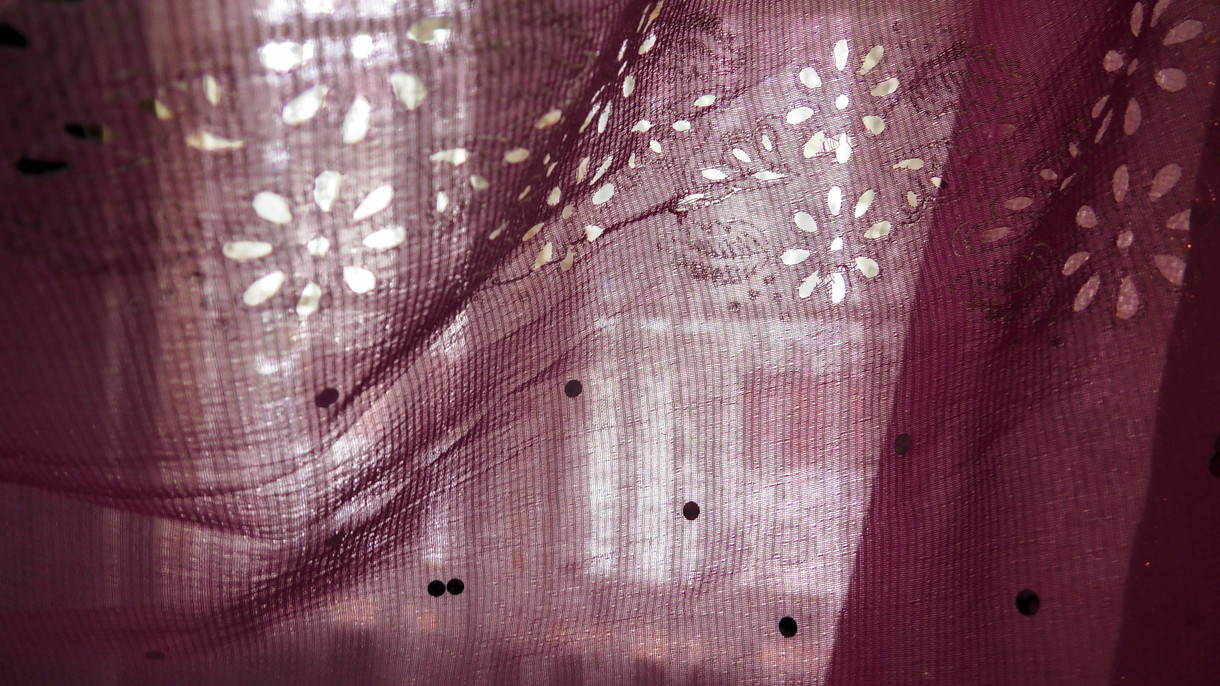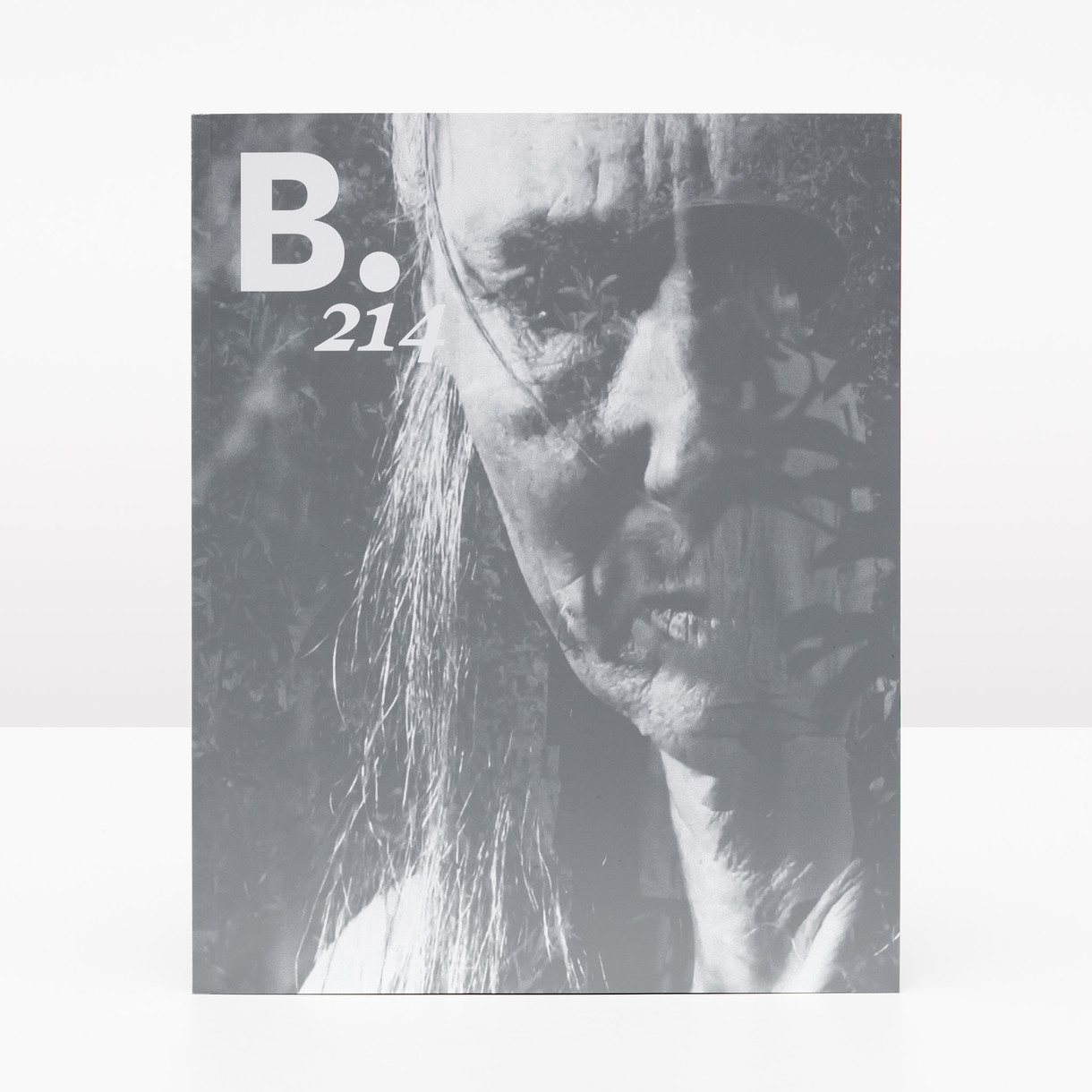Silver Screen
Notes on Moving Image and Editing in Spring Time is Heart-break
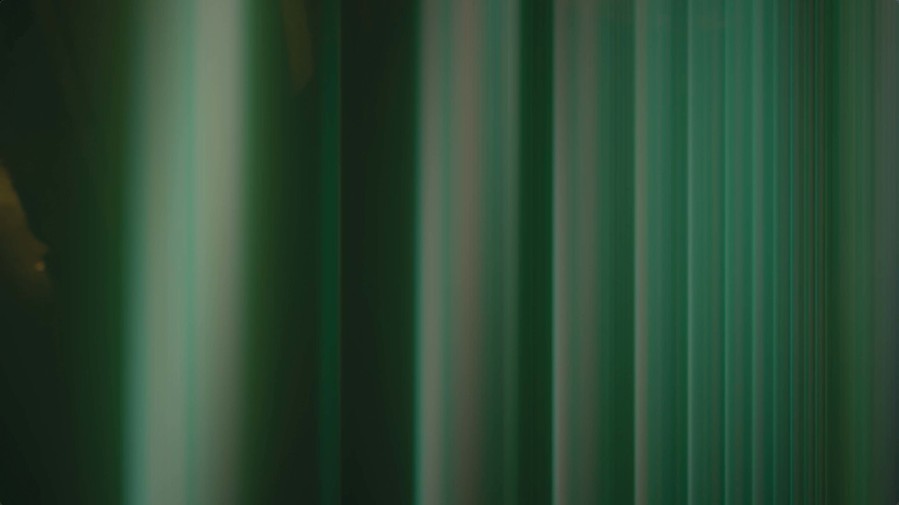
Angel C. Fitzgerald Forever (still) 2023. HD video. Courtesy of the artist
Writing on the virtues of filmic possibility, Susan Sontag identifies that “the distinctive cinematic unit is not the image, but the principle of connection between the images: the relation of a ‘shot’ to the one that preceded and the one that comes after.”1 It is this ability to manipulate the structure of film that makes the medium special; editing, Sontag proposes, is the reason for film to exist at all. The continuation or dissolution of one scene into the next constitutes the materiality of the moving image; it is defined by the seams where it also might be undone. As such, an artist’s choice to work with moving image comes from an appreciation of its distinct characteristics.
Spring Time is Heart-break: Contemporary Art in Aotearoa registers a return to storytelling taking place in artistic production. This was something discussed with some frequency during the development of the exhibition, as many of the artists involved brought a renewed attention to the way we tell stories. While there are more stories circulating than ever, what we are really seeking are meaningful arrangements of them. The moving image works in Spring Time is Heart-break are edited in ways that use both the breadth and limitations of the medium as tactics: as a conceptual framework, a time-machine, choreography.
Angel C. Fitzgerald’s film Forever is comprised of quickly filmed imagery – the video clips you take on your phone at a club, while watching a slow-moving body of water scatter and refract its tiny ecosystem, a record of the late-night skin of a city, fireworks, your friend’s hot manicure, your own reflection, always better somehow with headphones. Forever is Fitzgerald’s homage to friendship and shifting circumstances, made over the course of many goodbyes as their friends moved away from Te Whanganui-a-Tara Wellington. Standing on the precipice of change has a unique intoxication about it. It elicits a psychological impulse like grasping, or even, gasping – a wish to have and hold as much as possible while you still can.
I start to think about editing like breathing: an activity that imposes cadence on a narrative, to which slight adjustments will radically alter the pace of the work. In Forever, this is experienced as an effervescent series of clips of headlights and fireworks, blossoming and receding so that it appears we might be moving toward a new destination – and subsequently leaving an old one. The sleight of moving image is used to force the experience of change into the realm of the viewer, but also becomes a way to reclaim this moment as something metamorphic.
The structure of Forever is driven by a score made with Fitzgerald’s friend Calum Gordon. The influence of the audio on the flow of the film sonically compels the viewer to anticipate the upheaval recorded in the content. Movie-time doesn’t have to adhere to chronology as we do, so inside the film forever is a conceivable span of time. Fitzgerald says, “it’s not forever, but these videos/this document/this time- stamp is.”2 This sentiment echoes William J. Simmons’s treatise on queer formalism, which also makes peace with endings and beginnings:
[In] queerness, we might understand and find liberation in the facts that everything has been done before and that there is no such thing as greatness, which is not to say that nobody and nothing can be truly special, but rather that all moments, all experiences, all of our daily intimacies coalesce like paint or photographic chemicals into the image of a life, and that is good enough.3
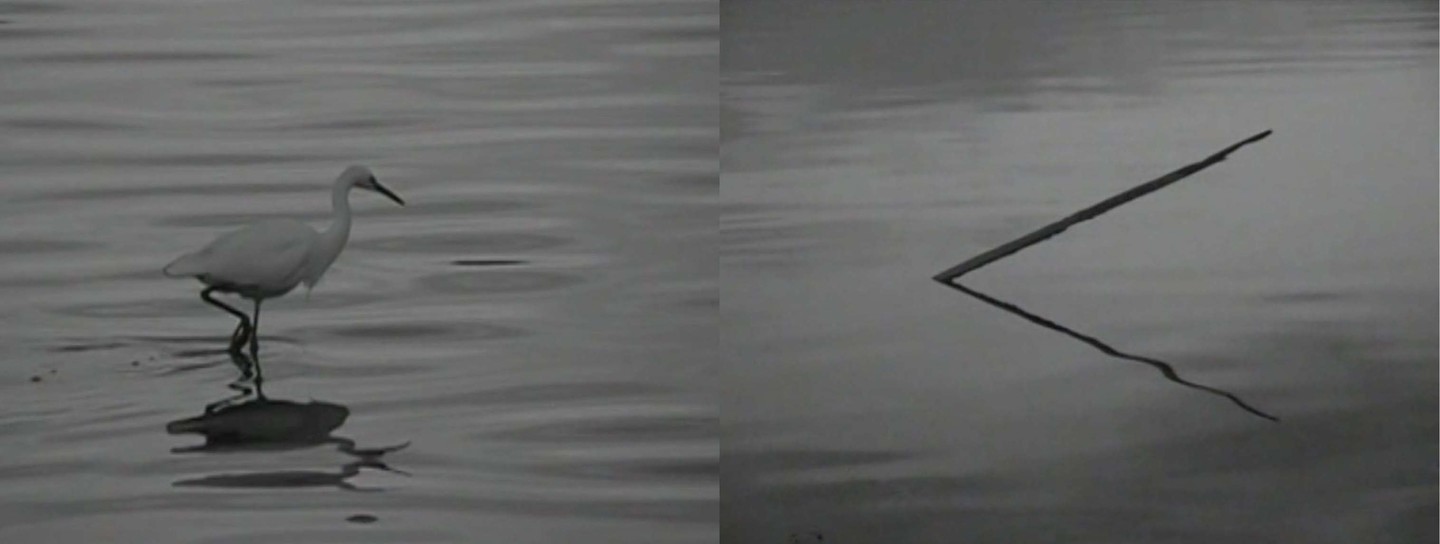
Sam Norton When Love is Not Enough (still) 2023. Two-channel video. Courtesy of the artist
It’s the magic of the supercut, of time sped up, that also means it can be stopped. If Forever accelerates its narrative, Sam Norton’s split-screen film When Love is Not Enough inverts this, using editing to defer reality. In black and white, a leggy stork traces small movements across one side of the work. On the other side of the screen, his dance partner is a stick protruding from rippled water, angled against a softly flowing current.
Independent from each other, the bird and the stick have a peaceful banality – they’re elegant but not totally captivating. And yet side by side, their separation is turned into a mirror. In placing these scenes together, Norton enacts the classical equation: two hearts are always better than one. Her work often deals in this currency, giving pause to that which is otherwise degraded or ordinary to remind that these are also the truest and purest, the parts we might learn the most from.
While watching When Love is Not Enough, I am holding my breath. I don’t want to come up for air. Time crystallises, halts. This kind of durational video draws out the time between the image and its contact with the surface of life. While we are with the stork and the stick, love is enough. Film theorist Masha Tupitsyn says, “faith is both a long shot and a long take.”4 Tupitsyn was writing on the work of Spanish filmmaker Albert Serra, recounting the editing process for his 2008 film Birdsong, which centres on the journey of the three wise men, minute across a vacant land- scape. Cutting images was not part of it – apparently Serra only made one cut in total – but deciding the length of time to play the shot to induce a mood of spiritual effort. There is a dual meaning to Tupitsyn’s words. In the first instance, she perceives that faith is expressed in moving image through the unedited clip; secondly, achingly, faith tends to have a slim chance of success.
Faith, I think, is very similar to love. It is a belief that someone external might be a wayfinder or a GPS – where you go, I’ll go too. In When Love is Not Enough, the juxtaposition of content allows each to recalibrate against the other, and the long cut lets this be sufficient cause for romance.
As long as the stork and stick are shadows, we are suspended before heartbreak or failure – the moment where we realise the shortcomings of this relationship. The shot keeps playing, prolonging the fantasy that the stick might be kin with the stork, or the stork kin with his wooden likeness.
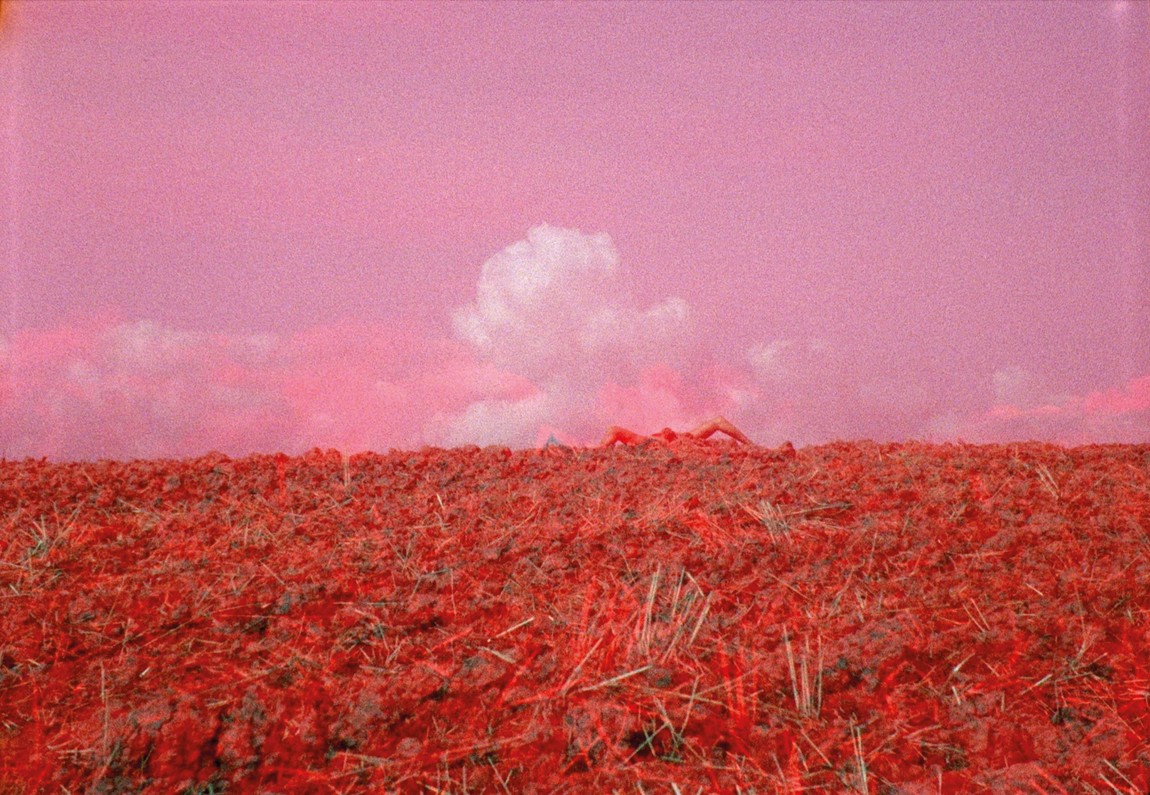
Sriwhana Spong Badlands (still) 2023. 16mm film transferred to HD video. Courtesy of the artist and Michael Lett, Auckland
To return to Sontag, who early on foretold that the principles of film would easily be adopted and hybridised by theories of art, the moving image works in Spring Time is Heart-break also engage formal experimentation, referencing the avant-garde cinema already being made when Sontag was writing.5 Moving image is a surface on which disciplines can be collapsed for these artists, mining fields like choreography and computer programming for an expanded toolkit.
“The editing is where the choreography will happen,” emails Sriwhana Spong. Spong developed her work Badlands over the course of a recent residency in Siena, researching the literature of Italian philosopher Ernesto de Martino. De Martino was interested in the continuation of ancient magic and ritual in Italy, particularly in the south, collating accounts of the practices that were still embedded in a rapidly modernising society. There is a connection here with Pugliese filmmaker Cecilia Mangini’s output, who collaborated with de Martino in the post-war period, and admired his sensitivity for the respect between subject and observer of ritual. Filming in a documentary style, Mangini concentrated on the proletarian and the magical – two ingrained aspects of Southern Italy. Writer Allison Gramaldi Donahue points out that there are unexpected resemblances between Mangini’s magical films and those concerned with labour and the working class. Work and ritual share prescribed and repeated actions which Mangini foregrounds.6 This repetition is present in Spong’s moving image as well, which corrals footage of bodies and ribbons set in baked earth into a twisting metre.
The tarantella is the main embodied ritual Badlands interrogates. Like others, it transcends language in favour of purgative and symbolic sounds, actions and colour. Although accepted as a symptom of a spider bite, the convulsive dance of the tarantella was implicitly a metaphorical cover for an internal conflict that could otherwise not be expressed so publicly. For Spong, the question was how to reproduce the mania of the tarantella cinematically. It is a release that cannot be shown, but rather, must be felt. Consequently, the connection of Badlands to its seams and edits must be similarly hypnotic. The cut becomes a way to enact a choreography where only the work knows where it is going next. Ambient music overlays a series of intervals to mimic the surrealism of the tarantella dancer, who is beholden to a rhythm seemingly severed from one’s own selfhood. In this way, moving image is the most appropriate format to show this kind of ritual behaviour as it can absorb more than one time scale – diegetic time and that imposed through editing – to evoke the altered state of ritual.

Juliet Carpenter The Sun Is Not To Be Believed (stills) 2022/23. HD video with MSP patch; duration 23 mins 19 secs. Courtesy of the artist
The interplay of dance and film is further augmented by the programmatic in Juliet Carpenter’s The Sun Is Not To Be Believed. Alluding to the unreliability of moving image through the title, the work is intended to be edited in real time using a computer programme built with Róisín Berg. Filmed in black and white, a sequence of movements takes place four times over, so that the previous versions are exposed against the latter ones, loosely influenced by the geometry of Samuel Beckett’s television play Quad (1981). Bright sunlight filters through a garden, throwing the setting into high contrast. Layers of shadow stretch and shift uneasily as the scenes are edited according to a computer’s code; prime meridian no longer only occurs in the middle of the day.
Moving through an inventory of objects that become textual markers – that is, places where we realise that we’ve been here before – Carpenter also references Maya Deren’s 1943 film Meshes of the Afternoon. A knife, a woman hooded, distant; a woman, identifiable, closer up, high shadow, a hand, a stem. These find their equivalents in The Sun Is Not To Be Believed in a pruning knife, a knotted joint of wood, a shrouded woman, a woman baring her torso, hands sifting through loose soil, searching for something. The deliberate placement of these signs is a red herring in both works. Though they appear to bear significance, their role is to form what art and cinema historian Sarah Keller has described as a “plateau of tension”.7 Withholding conclusion was essential to Deren’s practice as a way of refusing narrative, preferring to establish a plane of unfulfilled expectancy, where patterns of plot appear and reappear but never amount to any climax. The Sun Is Not To Be Believed equally rejects finality. The algorithm at its core means ceaseless additional iterations will be generated, leaving any summary of the work necessarily incomplete. Had the technology been available to Deren, no doubt she would have embraced the chance for editing to continue infinitely. As it was, she took the liberty of adding a soundtrack sixteen years after Meshes of the Afternoon was shown, reopening interpretation of the film at a much later date.
Carpenter folds Deren’s psychodrama and Beckett’s “ballet for four people” into her algorithmically driven work. Beneath an upload of Quad on YouTube, I find someone has commented “samuel beckett invented video games”. It’s true – video games have inherited the mathematical movement of Quad, players destined to move along predetermined lines. Crucially, games that follow abstract strategy laws are not valued for their meaning but for their careful balance of rules and variability. Each round is rarely a replay of the previous, but the constraints allow its participants to foresee hypothetical outcomes and react accordingly. The Sun Is Not To Be Believed wields these same conditions. It is a work organised by rational forces to simultaneously stimulate a psychological performance, turning moving image into a cosmic game. Here, the cinematic unit dissolves, usurped by the unit of the computer. If the sun is not to be believed, what other elements are deserving of suspicion? We learned to trust the photograph, and then we learned to trust cinema. Can we learn to trust the algorithmic? Would our trust be misplaced?






